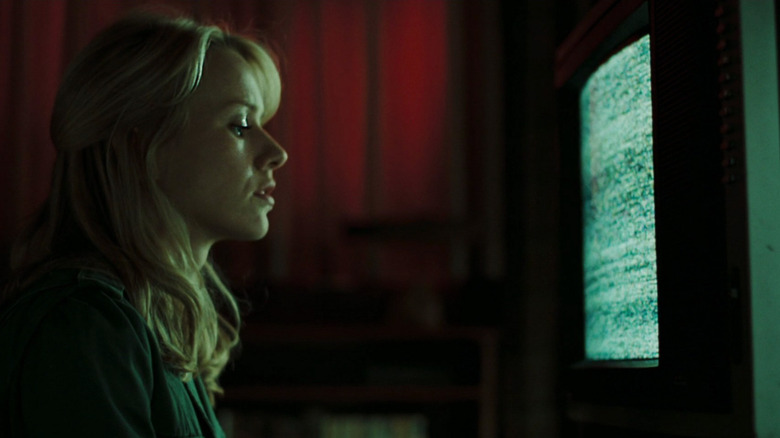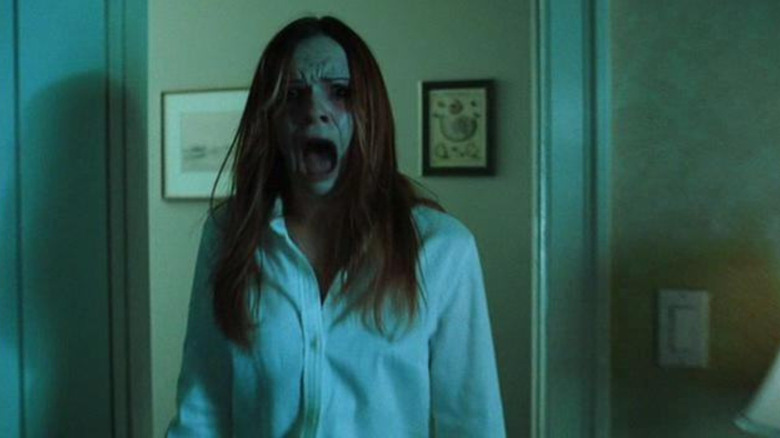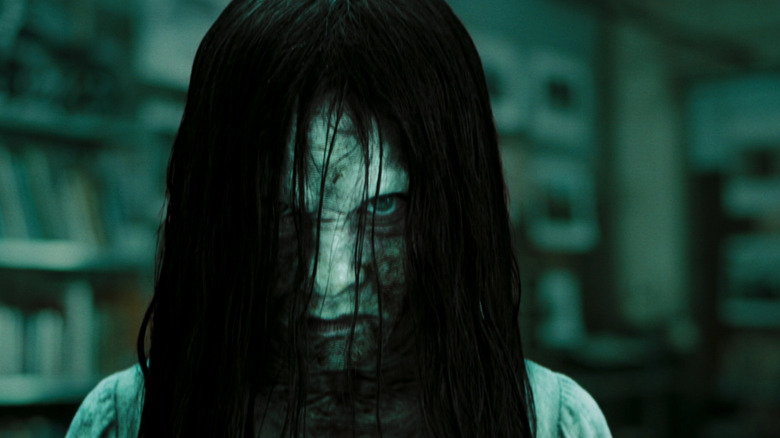Why The Ring Is A Rare Horror Remake That Strengthens Its Predecessor
Western remakes of Japanese horror movies almost always miss the mark. More often than not, they are a shell of their original selves, sanding down deep allegories or cultural differences in order to appeal to the widest general audience. The vast majority of the time, it actually ends up backfiring significantly as this broader scope comes across as more pandering than anything. While these remakes are still a thing, they aren't nearly as prominent as they used to be throughout the 2000s.
Funnily enough, it was perhaps the first major remake that still remains one of the best. In 2002, Gore Verbinski brought the terrors of "The Ring" to American audiences, adapting the 1998 film "Ring" (aka "Ringu") by Hideo Nakata. While the original film's evil spirit Sadako is a uniquely Japanese ghost called a yūrei, the themes of the horrors of rapidly-adapting technology could easily be replicated for any culture. Many similar movies based on Japanese, or Asian horror in general, often erase these cultural signifiers, with the most notable arguably being 2004's "The Grudge" dismissing the 2002 original's ties to the "Yotsuya Kaidan" legend.
However, the universal appeal of "The Ring" is not the reason why it still stands as one of the best horror remakes ever made, although it certainly helps. Rather, this timelessness comes from how it changes the original film's scares into something more visceral and less abstractly spooky. While the idea of the original sticks with you, the images in the remake plant themselves in your mind.
Terror on tape
Samara, Verbinski's answer to Sadako, maintains the same abilities as her ghostly predecessor. Her spirit haunts a video that curses anyone who watches it, taunting them in various ways until eventually killing them a week later. It's also important to note that her methods of killing were relatively bloodless, similar to Sadako's deaths in the original.
However, where the corpses made by Sadako simply look shocked, the ones made by Samara look downright haunting. Each body, covered with sickly grayish-blue splotches, has its jaw severely dislocated, almost looking severed internally from certain angles. Their eyes are rolled back into their head, and their limbs are contorted in painful ways. It is a terrifying sight to behold, and when paired with the frantic editing that was commonplace for horror movies at the time, it is even more striking.
The same can also go for its central tape. Containing more intense scenes than the original, you get subjected to images like self-mutilation and maggots eating an indecipherable object. These scenes are cut up more frantically than Sadako's tape, which moves more slowly. When viewing it from the perspective of it being something you shouldn't be able to watch, Samara's tape is arguably more effective, with the more cinematic aesthetic and editing adding to the discomfort.
It won't stop
While eerie in its own right, the original "Ring" is not particularly scary. There is a creepy atmosphere to it, but perhaps the scariest image is that of Sadako crawling out of the television at the end. This can largely be summarized as a cultural difference, as Japanese horror tends to more often than not move more slowly, deliberately paced and contemplative rather than concerned with brief shocks.
In comparison, "The Ring" takes the same concept and makes the aftermath terrifying. The images that the tape and Samara's attacks leave behind are unexplainable in a way that can't be written off easily. Verbinski managed to find a great balance between honoring the original source material and updating it for general sensibilities. He kept the loose story and universal fears of rapid industrialization intact while making the consequences of not passing along the curse feel more visceral and urgent.
It doesn't erase the significance of the original "Ring," even after crossing the cultural barrier. Rather, "The Ring" expands its ideas just enough that it gives audiences a more explicit idea of what the original wanted to convey. It is something that so many western remakes of Japanese horror movies fail to do, and although those movies will be remembered for their mixed-to-negative receptions, "The Ring" will always be remembered as arguably the sole remake that stands toe-to-toe with the original.


